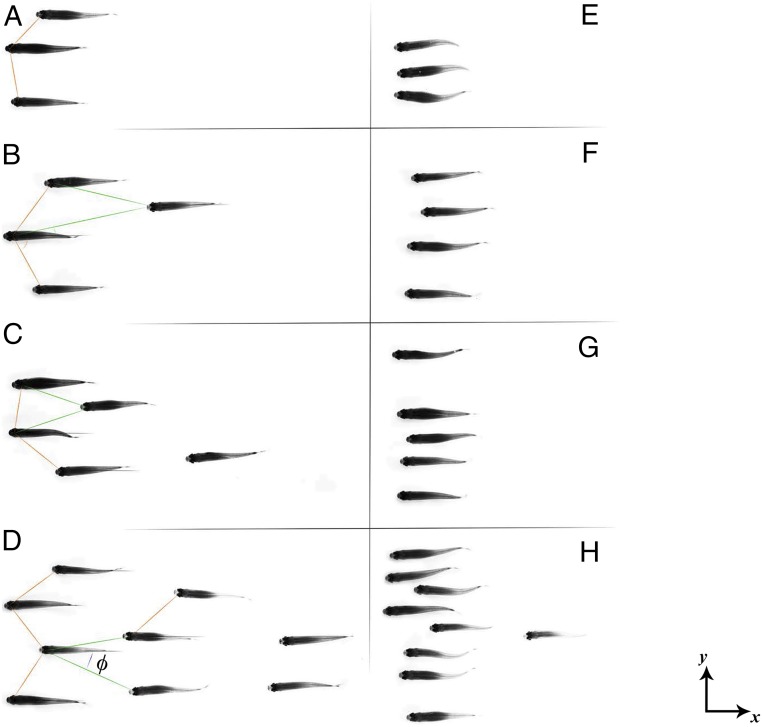Fig. 1.
Characteristic swimming patterns for increasing fish group size at two different swimming speeds. (A–D) (see also Movies S1 and S2). The school pattern is spread downstream with characteristic angles and distances to nearest neighbors. (E–H) (see also Movies S3 and S4). As more effort is required to hold a high swimming regime, the fish reorganize in a compact in-line formation. In this configuration, fish within the group are synchronized with their nearest neighbors, corresponding to collaborative efficient swimming modes.

